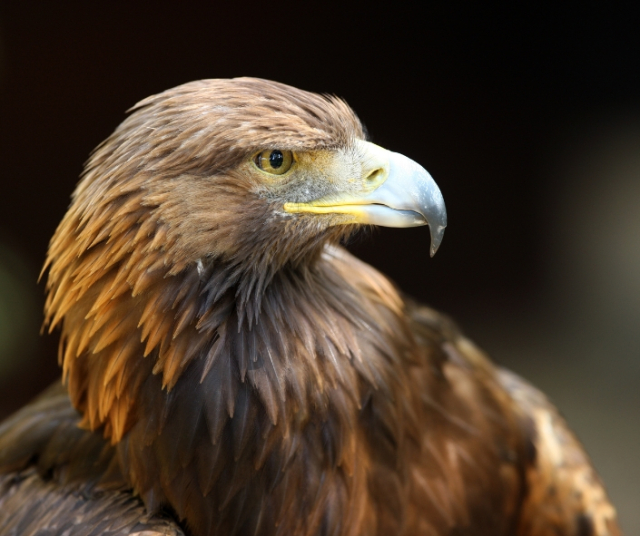Mexico, a land rich in biodiversity and traditions, has proudly selected the golden eagle as its national animal. This majestic bird of prey has played a significant role in Mexican history, mythology, and culture throughout the centuries.
History and Meaning
The choice of the golden eagle as the national animal of Mexico was not a mere formality, but an act that is based on a rich history and deep cultural meaning. This majestic bird of prey has been a prominent figure in Mexican history, playing crucial roles in indigenous traditions and merging with national identity after independence.
Since pre-Columbian times, the golden eagle has held a special place in the mythology and beliefs of Mesoamerican civilizations, particularly the Aztecs. The legend of the founding of Mexico-Tenochtitlán, where an eagle devours a snake on a cactus, has endured through the centuries as a symbol of prophecy and destiny. The choice of this event as the basis for founding the Aztec capital highlights the importance attributed to the golden eagle as a messenger of the gods and a symbol of power.
With the arrival of the Spanish conquistadors in the 16th century, the golden eagle not only survived, but was also integrated into the cultural fusion that followed the conquest. Colonizers recognized the significant presence of the eagle in local traditions and helped consolidate its status as a unifying emblem. It was this process of cultural syncretism that paved the way for the official designation of the golden eagle as the national animal of Mexico in 1821, the year in which the country's independence was achieved.
The golden eagle is not just a symbol in history; It is a living presence on the flag of Mexico. The national emblem shows the eagle devouring a snake in the center of a cactus, a visual representation that evokes the legend of the founding of Tenochtitlán. This image on the flag is not only a reminder of Mexico's pre-Hispanic roots, but also a symbol of the nation's ability to overcome challenges and move forward.
Characteristics of the Golden Eagle
The golden eagle (Aquila chrysaetos) is not simply the national animal of Mexico; It is a species that embodies majesty and adaptability, playing a crucial role in the country's biodiversity and ecology. Exploring the characteristics of this imposing bird of prey not only reveals its impressive anatomy, but also its essential role in the life of Mexican ecosystems.
With a wingspan that can reach up to 2.3 meters, the golden eagle is one of the largest birds of prey in the world. Its golden and black plumage not only gives it an imposing appearance but also provides essential camouflage for hunting prey in its natural habitat. Its keen sense of sight, which can detect prey from kilometers away, and its prowess in flight make it a formidable predator and essential for ecological balance.
The distribution of the golden eagle spans a diversity of habitats in Mexico, from arid deserts to majestic mountains. This geographical adaptability not only highlights the versatility of the species, but also symbolizes the diversity of landscapes that characterize Mexico. Its presence in these varied environments highlights the importance of the golden eagle as an indicator of the health of the ecosystems it inhabits.
On an ecological level, the golden eagle plays a vital role in controlling prey populations, such as rabbits, hares and rodents. Its position at the top of the food chain helps maintain a natural balance, preventing the excessive proliferation of certain species and promoting the general health of the ecosystem. Furthermore, as a top predator, the golden eagle plays a crucial role in biodiversity conservation by influencing the dynamics of prey and predator populations.
Symbolism in Mexican Culture
The golden eagle goes beyond simply being a national symbol; It is an icon deeply rooted in Mexican culture. It is frequently depicted in art, music, and literature as an emblem of strength, freedom, and bravery. The figure of the golden eagle is also found on the flag of Mexico, where it is shown devouring a snake, as told in the legend of the founding of Tenochtitlán.
In addition, the golden eagle is the protagonist in various celebrations and festivals throughout the country. On Flag Day, celebrated on February 24, tribute is paid to this national symbol. Depictions of the eagle are used in parades, civic events and ceremonies, reminding citizens of their identity and unity as a nation.
Conservation of the Golden Eagle
Despite its position as the national animal of Mexico and its prominent presence in culture, the conservation of the golden eagle (Aquila chrysaetos) has become a pressing task. This majestic bird of prey, a symbol of strength and freedom, faces a series of threats that endanger its existence and the rich biodiversity of the Mexican skies.
One of the main challenges facing the golden eagle is habitat loss due to human growth and industrial development. The expansion of urban areas and the transformation of land for agriculture has significantly reduced the hunting and nesting territories of the golden eagle. This loss of habitat not only directly impacts the species, but also affects the prey it depends on for food, creating an imbalance in the food chain.
Environmental pollution is another critical threat to the golden eagle in Mexico. The accumulation of toxic chemicals in the environment, such as pesticides and heavy metals, can have devastating effects on the health of these birds of prey. Water pollution and the presence of chemicals in prey and potential prey can have serious consequences, affecting the reproduction and survival of offspring.
Poaching also represents a significant threat to the golden eagle. Although it is protected by environmental laws in Mexico, illegal hunting persists, either by direct persecution of these birds or by the capture of their natural prey. The illegal trade in birds of prey, destined for sale on the black market, contributes to the decline of golden eagle populations.
